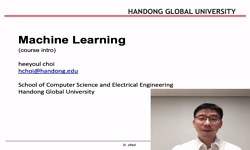목적 본 연구의 주요 목적은 초·중·고등학생의 정보역량 향상 요소를 규명하고, 그 영향력을 정량적으로 평가하는 것이다. 이를 위하여, 머신러닝의 앙상블 계열 중 랜덤포레스트(Random Fo...
http://chineseinput.net/에서 pinyin(병음)방식으로 중국어를 변환할 수 있습니다.
변환된 중국어를 복사하여 사용하시면 됩니다.
- 中文 을 입력하시려면 zhongwen을 입력하시고 space를누르시면됩니다.
- 北京 을 입력하시려면 beijing을 입력하시고 space를 누르시면 됩니다.

랜덤포레스트(Random Forest)를 활용한 초·중·고등학생의 정보역량 영향요인 탐색 = Exploring Factors Affecting Information Literacy in Elementary, Middle, and High School Students Using Random Forest
한글로보기https://www.riss.kr/link?id=A108803811
- 저자
- 발행기관
- 학술지명
- 권호사항
-
발행연도
2023
-
작성언어
-
- 주제어
-
KDC
373
-
등재정보
KCI등재
-
자료형태
학술저널
-
수록면
905-922(18쪽)
- DOI식별코드
- 제공처
-
0
상세조회 -
0
다운로드
부가정보
국문 초록 (Abstract)
목적 본 연구의 주요 목적은 초·중·고등학생의 정보역량 향상 요소를 규명하고, 그 영향력을 정량적으로 평가하는 것이다. 이를 위하여, 머신러닝의 앙상블 계열 중 랜덤포레스트(Random Forest) 알고리즘을 활용하였다. 랜덤포레스트는 결정 트리를 기반으로 하는 앙상블 기법으로 과적합의 위험을 줄이고, 높은 예측 정확도와 안정성을 갖추고 있어 다양한 연구와 실무에 활용되고 있다. 본 연구에서는 초·중·고등학생 대상 설문 데이터를 바탕으로 정보역량에 영향을 미치는 다양한 변수들을 추출하였다. 변수 간의 복잡한 상호작용을 분석하고, 그 중에서도 특히 정보역량에 중요한 영향을 미치는 주요 변수들을 식별하였다. 또한, Shap Value를 활용하여 각 주요 변수의 영향력을 정량적으로 평가하였으며 이를 통해 각 변수의 상대적 중요도와 영향력을 명확하게 이해하는 것을 목적으로 하였다.
방법 본 연구의 목적을 수행하기 위하여 한국지능정보사회진흥원에서 공개한 공공데이터를 활용하여 초·중·고등학생 1,469명의 데이터를 추출하여 모델의 학습 및 평가 데이터로 사용하였다. 설명변수로 정보활용, 사회관계 및 정보공유 서비스 이용도 등 총 20개를 선정하였다.
결과 본 연구에서 구축된 최종 모델의 성능은 Accuracy 0.721, Precision 0.716, Recall 0.723, F1 Score 0.711로 나타났으며 주요 영향 변수로 디지털기기 이용 효능감, 디지털 기술에 대한 태도, 정보활용, 사회관계 및 정보공유 서비스, 사회적 자본, 사회관계 및 정보공유 서비스, 정보생산 및 공유정도, 생활서비스 이용도, 디지털 조력자로 나타났으며 각 변수의 Shap Value를 분석한 결과, 생활서비스 이용도(PC)를 제외하고 설명변수와 종속변수는 양(+)의 관계로 나타났다. 생활서비스 이용도(PC)의 경우, 응답 값의 증가가 Shap Value 값과의 뚜렷한 상관을 보이는 패턴이 나타나지 않았다.
결론 4차 산업 혁명으로 디지털 사회가 도래하였으며 이러한 사회에서 정보역량은 필수적인 핵심역량으로 개인의 학습 능력뿐만 아니라 일반적인 생활에서 경쟁력을 높이는 데 중요한 역할을 한다. 본 연구의 결과에 따라 초·중·고등학생의 정보역량 제고를 위하여 SW·HW 교육, 디지털기기 활용 정보 재생산 교육, 디지털 태도 함양 교육 등이 필요하다.
다국어 초록 (Multilingual Abstract)
Objectives The main purpose of this study is to identify factors that improve information competency in elemen-tary, middle, and high school students and quantitatively evaluate their influence. For this purpose, the Random Forest algorithm among the...
Objectives The main purpose of this study is to identify factors that improve information competency in elemen-tary, middle, and high school students and quantitatively evaluate their influence. For this purpose, the Random Forest algorithm among the ensemble series of machine learning was utilized. Random Forest is an ensemble technique based on decision trees that reduces the risk of overfitting and has high prediction accuracy and stabil-ity, so it is used in various research and practice. In this study, various variables that affect information competency were extracted based on survey data from elementary, middle, and high school students. Complex interactions between variables were analyzed, and key variables that had a particularly significant impact on information capa-bilities were identified. In addition, Shap Value was used to quantitatively evaluate the influence of each major var-iable, with the goal of clearly understanding the relative importance and influence of each variable.
Methods To fulfill the objectives of this study, we used publicly available data from the National Information Agency, extracting data from 1,469 elementary, middle, and high school students for model training and evaluation. A total of 20 explanatory variables were selected, including information utilization, social relationships, and the level of usage of information-sharing services.
Results The final model built in this study showed performance metrics of Accuracy 0.721, Precision 0.716, Recall 0.723, and F1 Score 0.711. The key influencing variables were identified as digital device usage efficacy, attitudes toward digital technology, information utilization, social relationships and information-sharing services, social capital, information production and sharing levels, usage level of lifestyle services, and digital enablers.
Conclusions The advent of the digital society due to the Fourth Industrial Revolution has made information literacy an essential core competency, playing a crucial role in enhancing individual learning capabilities as well as general competitiveness in everyday life. According to the results of this study, in order to improve the information literacy of elementary, middle, and high school students, education in software and hardware (SW·HW), training in in-formation reproduction through digital device usage, and fostering a positive attitude toward digital technology are necessary.
목차 (Table of Contents)
- Ⅰ. 서론
- Ⅱ. 이론적 배경
- Ⅲ. 연구방법
- Ⅳ. 연구 결과
- Ⅴ. 결론 및 제언
- Ⅰ. 서론
- Ⅱ. 이론적 배경
- Ⅲ. 연구방법
- Ⅳ. 연구 결과
- Ⅴ. 결론 및 제언
- 참고문헌
동일학술지(권/호) 다른 논문
-
스캐폴딩 기반 온라인 협력학습 환경에서 예비교사의 사회적 실재감이 학습성과에 미치는 영향
- 학습자중심교과교육학회
- 정지은(Ji-eun Jeong)
- 2023
- KCI등재
-
- 학습자중심교과교육학회
- 민홍기(Hong Gy Min)
- 2023
- KCI등재
-
- 학습자중심교과교육학회
- 주현경(HyunGyung Joo)
- 2023
- KCI등재
-
- 학습자중심교과교육학회
- 전윤경(Yungyeong Jeon)
- 2023
- KCI등재




 스콜라
스콜라






